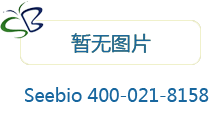胶体金试纸研发用表面活性剂列表
Part I
S-1 NINATE 411
S-2 Pluorinic F68
S-3 Zonyl FSN 100
S-4 Aerosol OT 100%
S-5 GEROPON T-77
S-6 BIO-TERGE AS-40
S-7 STANDAPOLES-1
S-8 Benzalkonium chloride
S-9 Tetronic 1307
S-10 Surfynol 465
S-11 Surfynol 485
S-12 IGEPAL CA210
S-13 TRITON X-45
S-14 TRITON X-100
S-15 TRITON X305
S-16 SILWET L7600
S-17 RHODASURF ON-870
S-18 Cremophor EL
S-19 TWEEN 20
S-20 TWEEN 80
S-21 BRIJ 35
S-22 CHEMAL LA-9
S-23 Pluranic L64
S-24 SURFACTANT 10G
S-25 SPAN 60
Part II Surfactant Toolkit Contents: (subject to change without notice-see insert with each kit)
1. Amine alkylbenzene sulfonate, Trade Name: NINATE 411, Class A, MW: 385,
Function: Solvent compatible,good enulsifier.
2. Poly(oxyethylene-co-oxypropylene) block polymer: Trade Name:Pluorinic (tm) F68, Class N, MW 8400, Function: excellent solubilizerand detergent; probably non-hemolytic
3. Telomer B monoether with polyethylene glycol,Trade name: Zonyl(tm)FSN 100, Class N, Function: Excellent wetter at very low concentration.Soluble in 30% IpOH, alcohols.
4. Sodium dioctylsulfosuccinate, Trade name: Aerosol(tm) OT 100%. Class A, MW 445, Function: Useful in solvent/TMB systems,a strong wetter and emulsifier, good antifog, mold-release and dispersing properties.
5. Sodium N-oleyl-N-methyltaurate, Trade name GEROPON(tm) T-77, Class A, MW 425, Function: Good wetting, dispersing properties.
6. Sodium olefin(C(14)-C(16)) sulfonate, Trade name BIO-TERGE(tm) AS-40, Class A, MW 315, Function: Mild, solvent-compatible.
7.Sodium polyoxyethylene(1) lauryl sulfate, Trade name STANDAPOLES-1, Class A, MW 346, Function: A strong anionic surfactant. Contains 2 parts in 5 sodium lauryl sulfate.
8.`Benzalkonium (C(8)-C(18)) chloride, Class C, MW Mixture, Function, Antimicrobial,solvent compatible.
9. Ethylenediamine alkoxlate block copolymer, Trade name, Tetronic(tm) 1307, Class M, HLB >24, MW 18600, Function: Non-hemolytic. solvent compatible, antistatic: good defoamer, disperser.
10.2,4,7,9-Tetramethyl-5-decyne-4,7-diol ethoxylate (10), Trade name: Surfynol(tm) 465, Class: N, HLB: 13, MW: Mixture, Function: Non-hemolytic; good wetter and defoamer.
11.2.4.7.9-Tetramethyl-5-decyne-4, 7-diol ethoxylate (30), Trade name: Surfynol(tm) 485, Class: N, HLB: 17, MW: Mixture, Function: Non-hemolytic, enzyme-compatible: good wetter and defoamer.
12.Octylphenol ethoxylate (1.2), Trade name: IGEPAL(tm) CA210, Class: N, HLB: 4.6, MW: 272, Function: Solvent compatible, good emulsifier.
13.Octylphenoxypolyethoxy (5)ethanol, Trade name: TRITON(tm) X-45, Class N, HLB: 10.4, MW: 426, Function: Solvent compatible: good emulsifier and dispersant.
14.Octylphenoxypolyethoxy(9-10)ethanol, Trade name: TRITON(tm) X-100, Class: N, HLB: 13.5, MW: 625, Function: Emulsification, wetting, dispersing; very enzyme compatible.
15.Octylphenoxypolyethoxy(30)ethanol, Trade Name: TRITON(tm) X305, Class: N, HLB: 17.3, MW: 1526, Function: Non-hemolytic, very water soluble: good wetter and emulsifier.
16.Polydimethylsiloxane methylethoxylate, Trade name: SILWET(tm) L7600, Class N, HLB: 13-17, MW: 4000, Function: Non-hemolytic, silicone-based; water soluble, antifogging.
17.Polyethoxylated(20) oleyl alcohol, Trade name: RHODASURF ON-870, Class: N, HLB: 15.4, MW: 1148, Function: Emulsifier,solubilizer, dispersant.
18.Polyethoxylated(35) castor oil, Trade name: Cremophor(tm) EL, Class N, HLB: 12-14, MW: NA, Function: Non-hemolytic, solvent compatible: emulsifier, solubilizer.
19. Polyoxyethelene(20)sorbitan monolaurate, Trade name: TWEEN(tm) 20, Class: N, HLB: 16.7, MW: 1228, Function: Non-hemolytic, very hydrophillic; solubilizer, emulsifier.
20.Polyoxyethelene(20)sorbitan monooleate, Trade name: TWEEN(tm)80,Class: N, HLB: 15 MW: 1310, Function: Non-hemolytic,very hydrophillic: solubilizer, emulsifier.
21.Polyoxyethylene(23) dodecyl ether, Trade name: BRIJ(tm) 35, ClassN, HLB: 16.9, MW: 1200, Function: Good Emulsifier.
22.Polyoxyethylene(9) lauryl alcohol, Trade name: CHEMAL LA-9, Class: N, HLB: 13.3, MW: 583, Function: Protein solubilization.Same structure as THESIT(tm).
23.Poly(oxyethylene-co-oxypropylene) block copolymer, Trade name: Pluranic(tm) L64, Class: N, HLB: 12-18, MW: 2900, Function: Non-hemolytic, solvent compatible: excellent wetter,good emulsifier.
24.p-[sonomylphenoxypoly(glycidol), Trade name: SURFACTANT 10G, Class: N, HLB: 12.4, MW: Mixture, Function: Non-hemolytic, v.enzyme-compatible, low foaming: good wetter.
25.Sorbitan Monostearate, Trade name: SPAN(tm) 60, Class: N, HLB: 4.7, MW: 431, Function: Oil soluble, solvent-compatible, water insoluble.
N = nonionic A = anionic
C = cationic M = amphoteric
HLB = Hydrophile-Lipophile Balance Number. The higher the number, the more hydrophilic the surfactant. Only applies to non-ionics.
NINATE(tm) and BioTerge(tm) are registered trademarks of Stephen Co. Aerosol(tm) is a registered trademark of American Cyanamide Co. Geropon(tm) and Igepal(tm) are registered trademarks of Rhone-Poulenc,Inc. Pluronic(tm), Tetronic(tm), and Cremophor(tm) are registered trademarks of BASF Corp. Surfynol(tm) is a registered trademark of Air Products and Chemicals Inc. TRITON(tm) and SILWET(tm) are registered trademarks of Union Carbide. TWEEN(tm), BRU(tm), and SPAN(tm) are registered trademarks of ICI Americas, Inc. Zonyl(tm) is a registered trademark of Du Pont Chemicals.
Part III Applications Notes (additional information providied with the kit=here is a sample)
Bio-Terge AS-40. tm
We used this surfactant effectively in solving some wetting and solubility problems during the development of a dry-phase urinary test device. We were experiencing a mottled color response and somewhat slow reaction times. We had a water-insoluble indicator that had resolubilize in an aqueous biological fluid, knew that wetting and solubility were the chief problem areas. We also knew that our current surfactnt, being applied in a pH 9 aqueous system, was helping somewhat, and thus launched a screen over a dozen likely surfactant choices. Bio-Terge AS-40,a mild anionic surfactant, stood out head-and-shoulders above the other candidates. The color response was strikingly better in appearance, with significant reaction speed gains.
Ninate 411. tm
In another impregnation mix, we were using methylisobutylketone (MIBK) as impregnation solvent. This was a highly desirable choice over acetone for both safety and reagent stability (MIBK does not absorb water) reasons. Unfortunately, the diazonium salt we were using precipitated out of solution during the impregnation run and could not be substituted by another. We had been using no surfactant at all, and in fact rarely if ever did in organic solvents. A screen for MIBK soluble surfactants produced 6 or 8 candidates, which we then tested to hold the diazonium salt in solution. Ninate 411 was the clear winner, and now afforded us unlimited pot-life times with regard to diazonium salt stability.
Aerosol OT 100%. tm
This surfactant is essential for tetramethylbenzidine (TMB) stability. TMB is an oxidative-type indicator that readily overoxi-izes to a cruddy brown color that is undesirable for either visual or instrumental readout. Aerosol OT stops the oxidation process at the nice classic robins-egg blue color. Aerosol OT is believed to accomplish this through a complexing with the TMB. The complex is tightest at the first oxidation state of TMB, and is thus stabilized at that point. Aerosol OT/TMB systems are soluble in organic solvents such as toluene. It can also be used in aqueous solutions, in which case TMB-HCI would be the appropriate indicator form.
Sodium cholate/deoxycholate.
These are important surfactants for cholesterol chemistries. Cholates are effective cholesterol solubilizers and cholesterol enzyme activators due to the common steroidal-like backbone structure of these surfactants and cholesterol. It is a good idea to try more than one cholate in a screen, since solubility characteristics can vary with factors such as pH and ionic strength.
SILWET L7600. tm
This is a unique siloxane-based surfactant with excellent wetting power. SILWET L7600 is among the few surfactants capable of wetting Teflon (PTFE) surfaces. It is highly soluble in both water and many organic solvents. We found this surfactant particularly useful once in a the development of a solid-phase whole-blood diagnostic device that was yielding biased numbers at high RBC hematocrit. A large array of surfactants was tested, and this was the only one that could eliminate the bias. It was thought that this surfactant through its powerful action at interfaces was interference by RBCs at the RBC-test surface interface. This surfactant is totally non-hemolytic. Typical use level is from 0.01 to 1%.
Surfynot 465/485. tm
This pair of surfactants is also very gentle on red blood cells and can be placed directly in materials used to adsorb or filter RBCs. Both surfactants improve the stability of latex suspensions when used either as sole emulsifying agent or in conjunction with other emulsifying surfactants. They are low-foaming, high-wetting,and are the surfactants of choice for achieving an even coating of membranes with reagents.Surfybnot 485 has a higher HLB and is thus somewhat more water soluble, although both are soluble in water to levels greater than 1.0%. Surfynol 465 has slightly lower surface tension.
Part IV Surfactant Definitions and Functions
Surfactant-an acronym for surface active agent. This is a more modern term than detergent, generally taking the place of the term detergent when referring to wetters, solubilizers, emulsifiers, and other items defined below. Surfactants almost always work to reduce attractive interactions between like particles and bring them to unlike surfaces. Surfactant is the name we use as a general term for all our Surfactant ToolKit items.
Wetting- this is simply the action of a surfactant to reduce the surface tension of a liquid. It does this by reducing like attractions of molecules with each other (such as with water) and increase the attraction towards an unlike surface. This is extremely important when reconstituting dry powders, dry beads, or reagents in solid-phase devices. If the speed and evenness of reconstitution is important, then a good wetting agent is essential. Trition X305, Surfactant 10G, Silwet L7600, and BioTerge AS-40 are all very good wetters.
Solubilizers - these are surfactants that can effect a solubilization of an otherwise insoluble material. If a concentration of surfactant is made high enough, micelle structures are formed. Insoluble molecules are then incorporated into the micelles and brought into apparent solution. Oftentimes reagent developers are faced with the dilemma of having to use water-insoluble substances in aqueous solutions, or water-soluble substances in organic solvents. Surfactants with good solubilizer properties can solve either problem. We once used Ninate 411 to solubilize a diazonium salt in acetone.
Emulsification - this is the property of surfactants to form a stable emulsion of two or more immiscible liquids. This is a little like micellular solubilization, but the resultant solubilizing particles are much bigger. Occasionally you might have a reagent in an oil form that needs to go into an aqueous solution.There are several surfactants such as Trition X45, BRIJ 35, the TWEENs. and Igepal CA210, that can help with this.
Dispersion - an important property of surfactants that keeps insoluble particles in suspension. They do this by preventing insoluble particles from aggregating with each other. The smaller the particles, the more stable the dispersion formed. Have you ever scaled up a reagent prep and had the pilot supervisor point out a bunch of unsightly crud settling out, hithert unseen at the bench? Your worst nightmare! Sometimes even the best of efforts will not keep things in solution, and then what you need is a surfactant with good dispersing properties. Tetronic 1307,Geropon T-77, and Rhodasurf ON-870 are good choices here.
Detergency - the ability of a surfactant to remove particles from a surface. We use this narrow definition to describe a detergent. Liken this function to the cleaning action of a surfactant to lift soil from a fabric. In the reagent development setting, it might be desirable to release reagents from membranes, paper filters, glass surfces and the like upon wetting. Surfactants with long, straight carbon chains, such as Bio-Terge AS-40,Standapol ES-1, and Chemal LA-9, are often the most effective here.
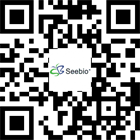 |
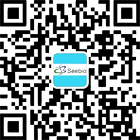 |
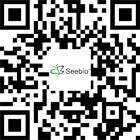 |
| 官网:www.cxbio.com | 微信服务号:iseebio | 微博:seebiobiotech |
 |
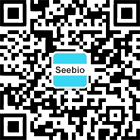 |
 |
| 商城:mall.seebio.cn | 微信订阅号:seebiotech | 泉养堂:www.canmedo.com |
相关资讯
- 辉瑞疫苗束手无策!仅有一种抗体药物能有效对抗Omicron变种!
- 手动分析模式可以缩减套用到96微孔板检测吗?
- FITC标记多糖
- 转基因生物安全证书诞生记
- 木薯淀粉
- 酶稳定剂和蛋白保护剂
- 缩水甘油脂肪酸酯标准品
- Science:新抗体能抵御99%艾滋病病毒变种
- 多糖纯化柱–西宝生物专业提供多糖纯化、多糖释放产品
- Nat Methods:开发出一种可加速对人类基因组分析的新技术
新进产品
同类文章排行
- FUJIFILM Wako 内毒素检测相关问题答疑
- 聚乙二醇主链ELISA试剂盒使用说明书
- 如何使用抗-PEG琼脂糖亲和纯化mPEG-BSA
- 为什么使用了wako的PVSK滴定溶液(货号167-28105,替代164-21655),测阳离子电荷密度的结果和原先有偏差
- 凝胶渗透色谱法的验证
- 有关分子量的若干问题 - 一个已知聚合物样品其分子量是什么?
- 纤维素内切酶T片剂(T-CTZ)可以替代羧甲基纤维素(CMC)用于不同来源的纤维素酶检测吗?
- 化学试剂的纯度与分级标准
- 【技术问答】Ludger DMB唾液酸释放标记试剂盒问题集锦
- 纤维素内切酶T片剂(T-CTZ)能用于牛仔布洗涤工序中纤维素酶活性的精确测定吗?
资讯文章
您的浏览历史




